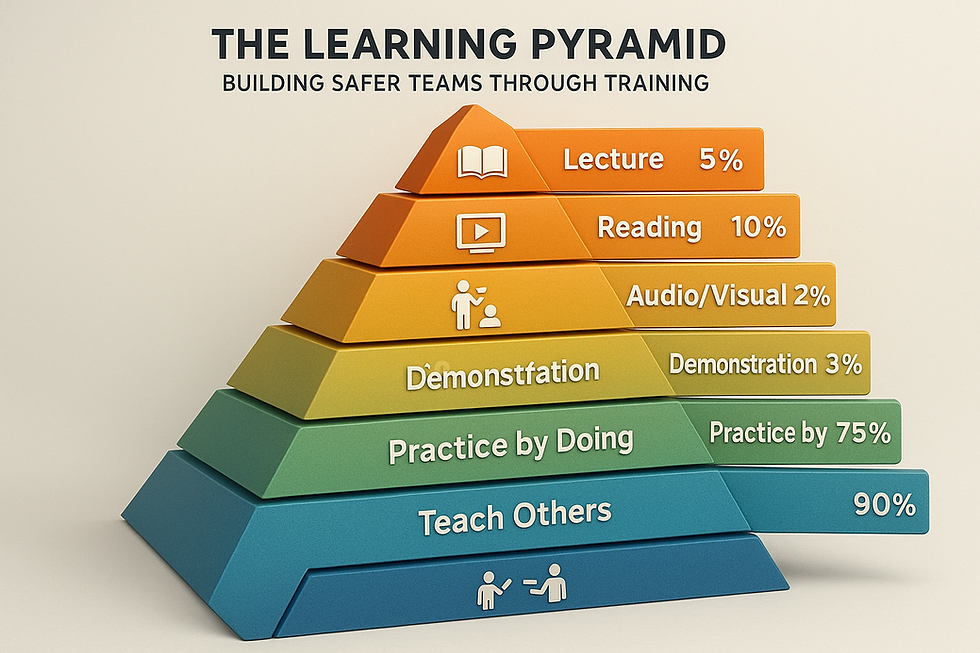Effective Approaches to Safety Project Management
- pdoyle57
- 3 days ago
- 4 min read
Managing project safety is a critical aspect of any project, regardless of its size or industry. Ensuring that safety protocols are integrated into every phase of a project not only protects workers but also enhances productivity and reduces costs associated with accidents and delays. This article explores practical and effective approaches to managing project safety, providing actionable insights to help you implement robust safety measures in your projects.
The Importance of Managing Project Safety
Safety is not just a regulatory requirement; it is a fundamental component of successful project management. Projects that prioritize safety tend to have fewer accidents, lower insurance costs, and higher employee morale. Managing project safety involves identifying potential hazards, assessing risks, and implementing controls to mitigate those risks.
For example, in construction projects, regular safety audits and training sessions can prevent falls, equipment mishandling, and exposure to hazardous materials. In manufacturing, proper machine guarding and emergency response plans are essential. By embedding safety into the project lifecycle, teams can avoid costly disruptions and maintain steady progress.

Key Strategies for Managing Project Safety
Effective safety management requires a structured approach. Here are some key strategies to consider:
Risk Assessment and Hazard Identification
Begin every project with a thorough risk assessment. Identify all potential hazards related to the project environment, equipment, and processes. Use tools like checklists, job safety analyses, and hazard logs to document findings.
Clear Safety Policies and Procedures
Develop and communicate clear safety policies tailored to the project’s specific needs. Ensure that all team members understand these policies and know how to apply them in their daily tasks.
Training and Competency Development
Regular training sessions are vital. These should cover general safety awareness, specific job hazards, emergency procedures, and the correct use of personal protective equipment (PPE).
Safety Leadership and Culture
Leadership commitment to safety sets the tone for the entire project. Encourage open communication about safety concerns and recognize safe behaviors to foster a positive safety culture.
Monitoring and Continuous Improvement
Use safety inspections, audits, and incident investigations to monitor compliance and identify areas for improvement. Implement corrective actions promptly and review safety performance regularly.
By following these strategies, project managers can create safer work environments and reduce the likelihood of accidents.
What are the 5 P's of Project Management?
Understanding the 5 P's of project management can enhance your approach to managing project safety. These elements provide a framework for organizing and executing projects effectively:
Purpose: Define the project’s objectives and the importance of safety within those goals. A clear purpose helps align the team’s efforts toward safe project completion.
Plan: Develop a detailed project plan that includes safety milestones, risk management strategies, and resource allocation for safety measures.
Particulars: Focus on the specific details of the project, such as site conditions, equipment used, and personnel qualifications, to tailor safety protocols accordingly.
People: Identify all stakeholders involved, including safety officers, workers, and subcontractors. Ensure everyone understands their safety responsibilities.
Process: Establish processes for communication, reporting, and decision-making related to safety. This includes incident reporting systems and emergency response plans.
Incorporating the 5 P's into your project management approach ensures that safety is integrated into every aspect of the project lifecycle.

Tools and Technologies to Enhance Safety Project Management
Modern technology offers numerous tools to support effective safety management. Leveraging these can improve accuracy, communication, and compliance:
Safety Management Software: Platforms that track incidents, inspections, and training records help maintain organized safety documentation and facilitate reporting.
Mobile Apps: On-site workers can use apps to report hazards, access safety manuals, and receive real-time alerts.
Wearable Devices: Sensors and wearable tech can monitor worker health, detect falls, and alert supervisors to unsafe conditions.
Drones and Cameras: These provide aerial and remote site inspections, reducing the need for workers to enter hazardous areas.
Using these technologies can streamline safety processes and provide valuable data for continuous improvement.

Best Practices for Engaging Teams in Safety
Engaging your team is essential for successful safety management. Here are some best practices:
Involve Workers in Safety Planning: Workers often have the best insights into potential hazards. Include them in risk assessments and safety meetings.
Regular Safety Meetings: Hold brief, focused meetings to discuss safety topics, share lessons learned, and reinforce safe behaviors.
Recognition Programs: Acknowledge individuals and teams who demonstrate outstanding safety practices to motivate continued compliance.
Clear Communication Channels: Ensure that safety information is accessible and that workers feel comfortable reporting concerns without fear of reprisal.
By fostering a collaborative safety culture, you empower your team to take ownership of their safety and that of their colleagues.
Moving Forward with Safety in Project Management
Effective safety management is an ongoing process that requires commitment, planning, and continuous effort. By integrating safety into every phase of your project, you not only protect your workforce but also enhance project outcomes. Remember to leverage the right tools, engage your team, and apply proven strategies to create a safer work environment.
For those looking to deepen their understanding and implementation of safety in projects, exploring resources on safety project management can provide valuable guidance and frameworks to support your efforts.
Implementing these approaches will help you manage project safety proactively and efficiently, ensuring your projects are completed successfully and safely.



Comments